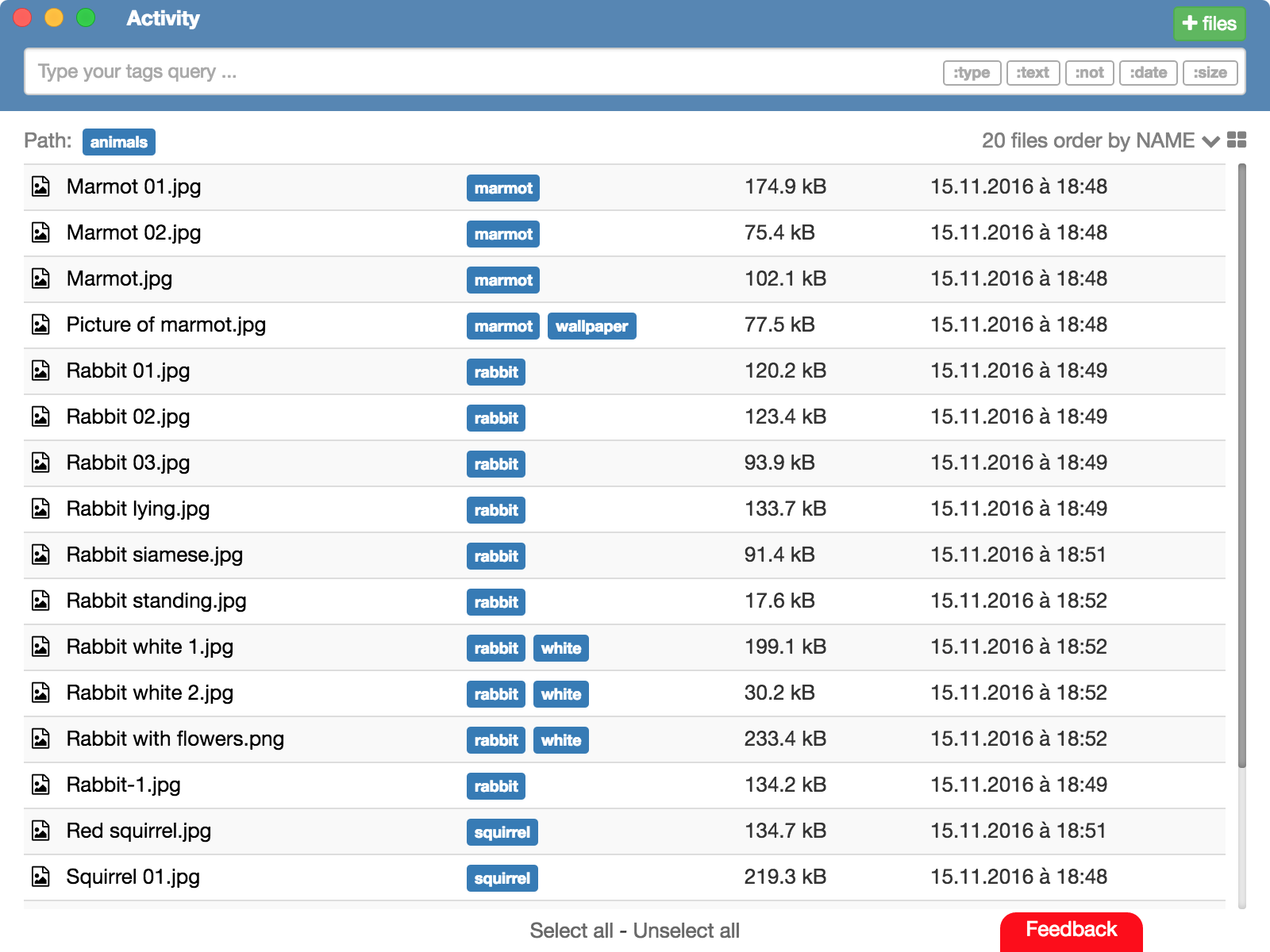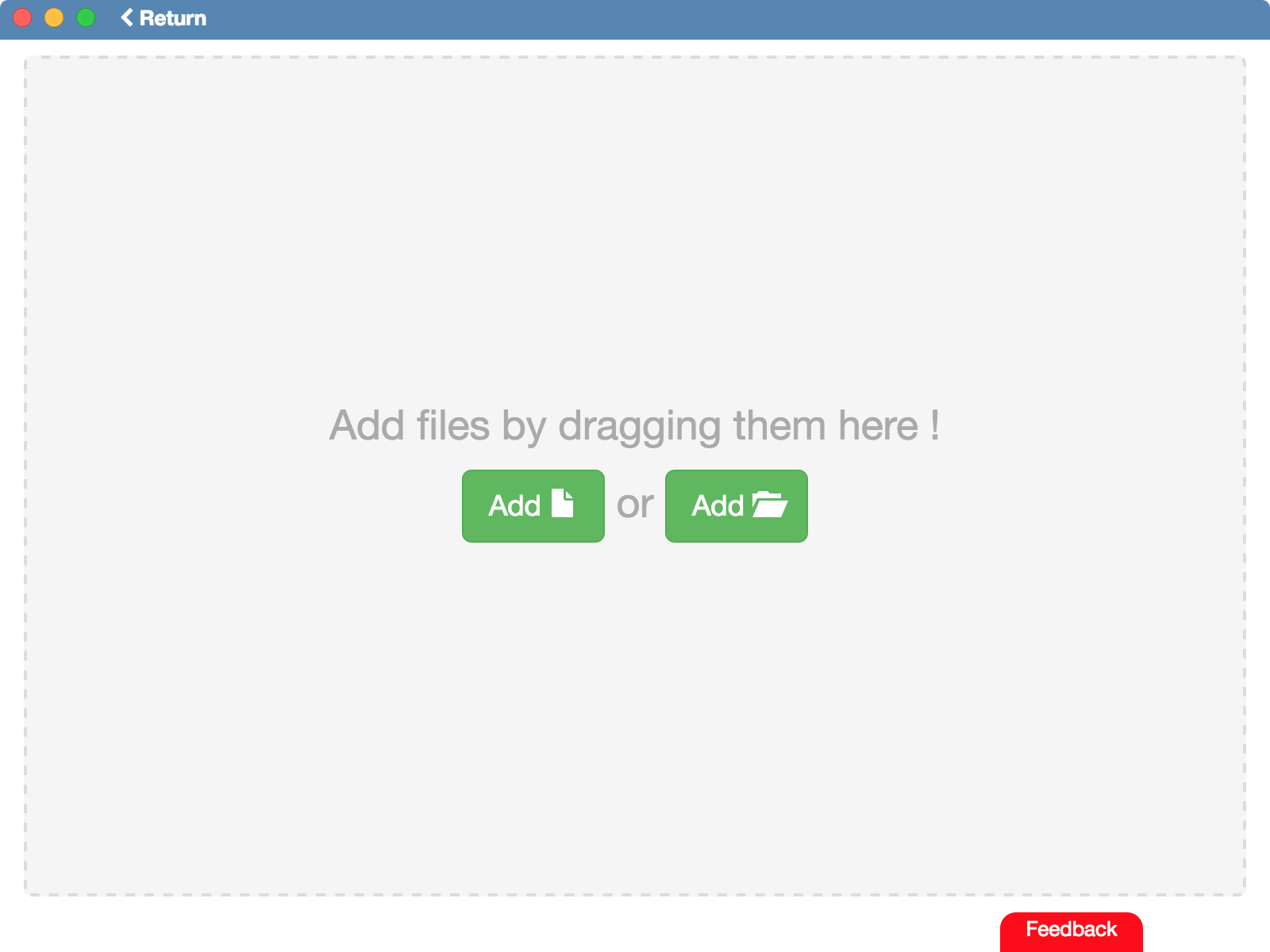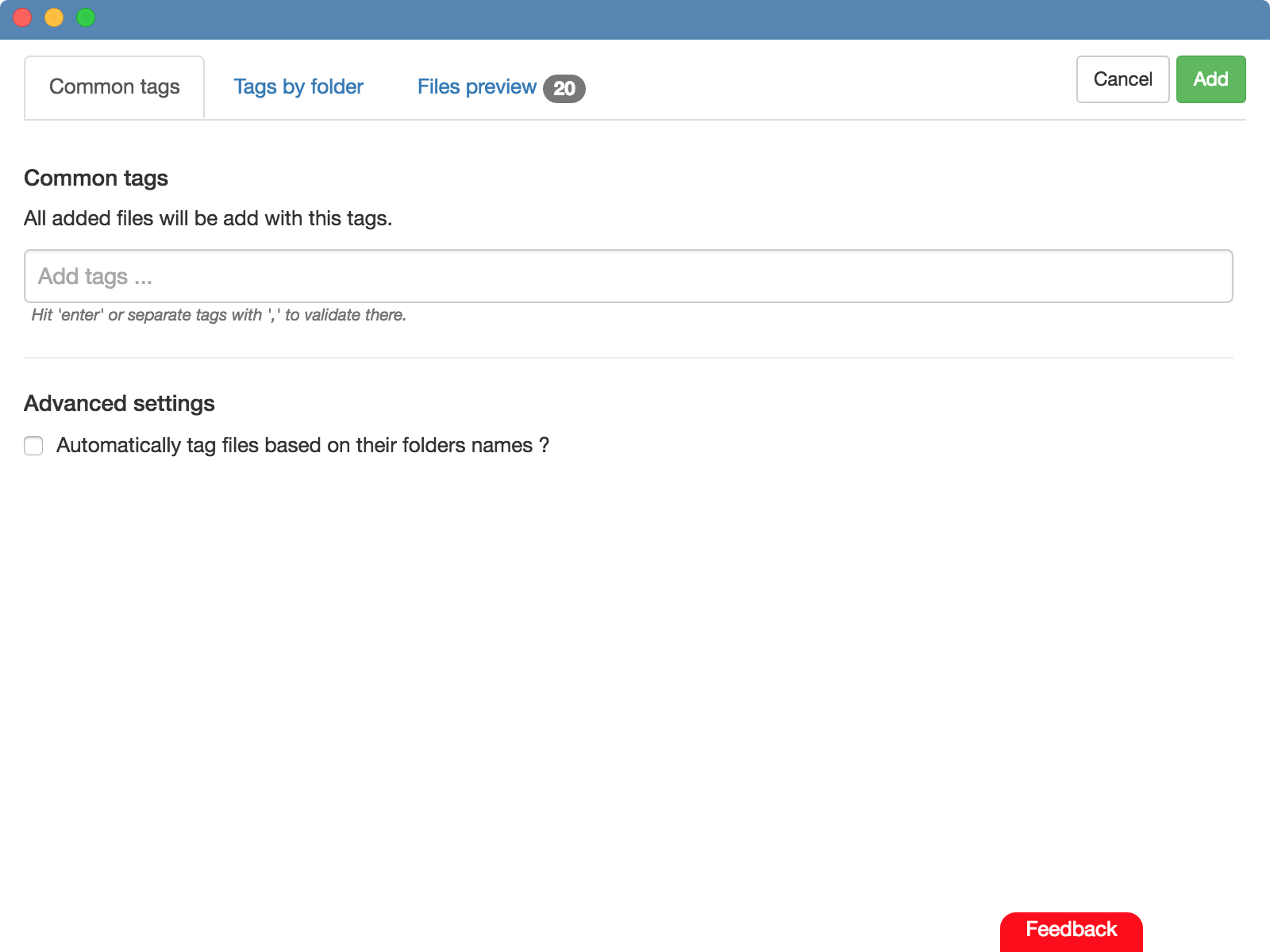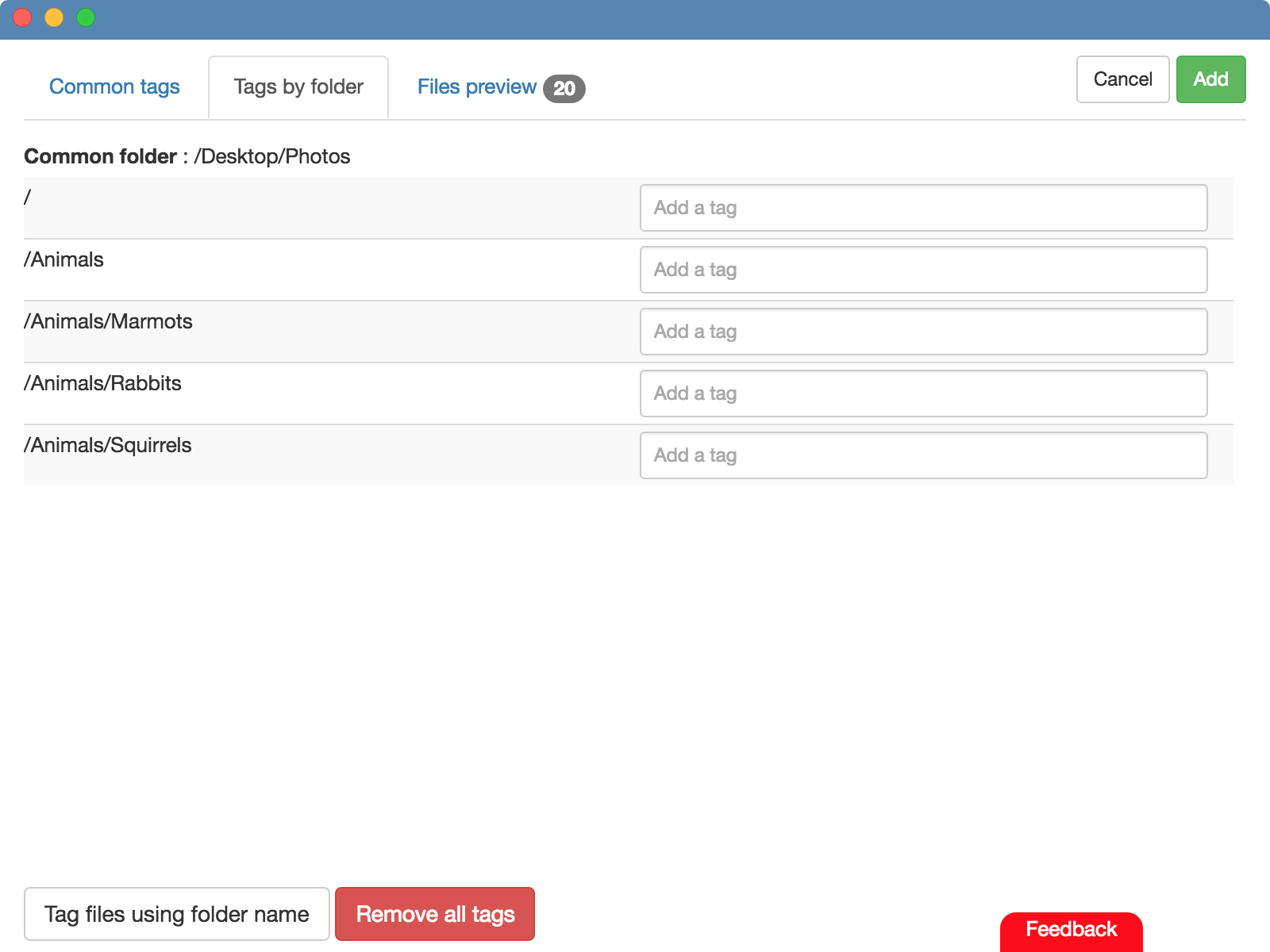Introduction
Preface
This tutorial show the basics of TagFlow in its beta. The features described here are not exhaustive, some will be improved and others will be added later.
In this tutorial, we will describe a very simple use case with animals pictures. However, note that TagFlow is designed to handle any type of file.
Installation
If not yet done, go to this page to download TagFlow.
Windows : double-click the .exe installer that was downloaded to your Download folder.
Mac : double-click the .dmg file that was downloaded to your Download folder and drag the TagFlow app to the Application folder.
First launch
Windows : the application opens automatically after installation.
Mac : go to the Applications folder and double-click the TagFlow icon.
In both cases, the following window appears :

Authentication window
The first step is to indicate your contact information for your enrollment in the beta program. Your email address will be used exclusively as part of the TagFlow beta and you will be able to unsubscribe at any time and leave this program.
When done, click "Next" and learn about some important information about TagFlow and the beta. After a few seconds, you can start using TagFlow !
Ready to start !
The introductory phase is over and you get the main TagFlow window.

Main window without files
You are now ready to organize your documents with TagFlow and its concept of structured and intelligent tags !












